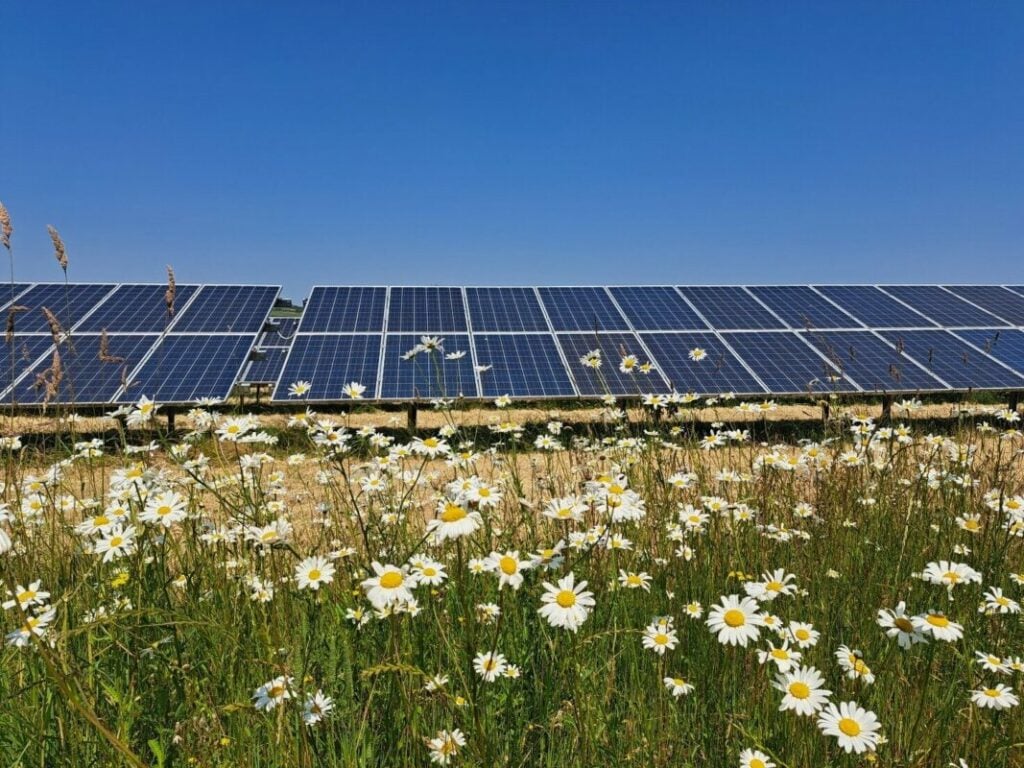
UK renewable energy firm RES has submitted a planning application to Armagh City, Banbridge and Craigavon Borough Council for a 29.9MW solar project.
Located on land approximately 1-kilometre southwest of Magheralin, initial plans for the project were presented at a public exhibition held in March 2023 to enable people to find out more about the proposal and provide RES with their views.
As a result of the detailed design process, a number of changes have been made to the design to ensure the solar farm does not excessively disturb the existing environment.
These changes include the removal of two parcels of land and the re-siting of the substation to reduce potential visibility, resulting in a reduction in the size of the project by more than 45 acres.
RES said that it chose the site because it has good solar irradiation levels, lies outside of any statutory environmental and landscape designations, and is near a viable grid connection.
Rachel Buchanan, development project manager at RES, said, “Solar is a free and inexhaustible resource that has an important role to play as part of a balanced energy mix. Large-scale solar, alongside other renewable technologies, is now the cheapest form of new electricity generation, making solar development beneficial not only for the environment but also for billpayers.
“We hope that Armagh City, Banbridge, and Craigavon Borough Council will agree that Magheralin Solar Farm is in an optimum position to help tackle climate change and make a positive contribution to Northern Ireland’s target to meet at least 80% of electricity consumption from renewable sources by 2030.”
Environmentally sound
A comprehensive Landscape Planting Plan accompanies the planning application, setting out measures to enhance existing planting as well as new tree and hedgerow planting.
In addition to reducing the solar farm’s potential visibility, these measures can increase biodiversity by providing wildlife corridors and vital resources for mammals, birds, and insect species.
A recent study supported by Solar Energy UK found that solar farms deliver significant biodiversity gains and have the potential to offer even more.
Conducted in collaboration with ecological consultancies Clarkson & Woods and Wychwood Biodiversity, the ‘Solar Habitat 2024: Ecological trends on solar farms in the UK’ study found that solar farms can become “safe havens for biodiversity” and play an “important role” in nature restoration.
The study analysed 87 solar sites in 2023, employing a standardised methodology that Solar Energy UK developed alongside Lancaster University in 2022.
The findings revealed that vulnerable and red-listed species, such as skylarks, are among the most common wildlife present on UK solar farms.
Yellowhammers, linnets and starlings – all red-listed bird species – were also present at the observed solar sites.
On the ground, brown hares, a species under conservation concern, made up 40% of mammal observations across the 87 observed sites.
The report also included a number of case studies, one of which found that it is possible to grow chamomile for commercial use between solar panel rows—an effective application of the concept of ‘agri-PV’.
Additionally, the report found that planting plugs and pot-grown plants underneath the solar modules have an 80% better survival rate after two years than sowing seeds.
Solar Power Portal’s publisher, Solar Media, will host the UK Solar Summit on 4-5 June 2024 in London. The event will explore the UK’s new landscape for utility and rooftop solar, looking at the opportunities within a GW+ annual market and much more.

